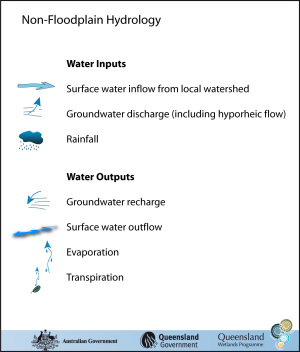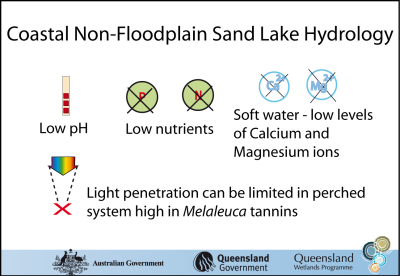|
|
Coastal and subcoastal non-floodplain sand lake—WindowCoastal and subcoastal non-floodplain sand lake—Window – Hydrology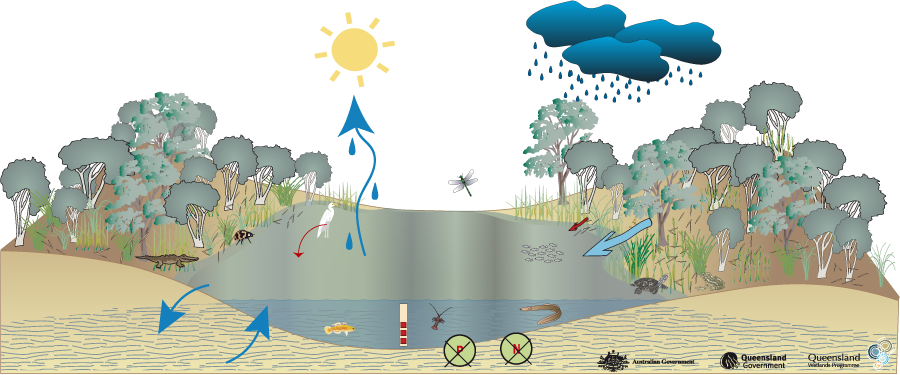 Click on elements of the model or select from the tabs below
Water qualitySome non-floodplain soil lakes are clear water systems, while others are stained by tea-tree tannins, depending on the presence and type of the fringing vegetation. Stratification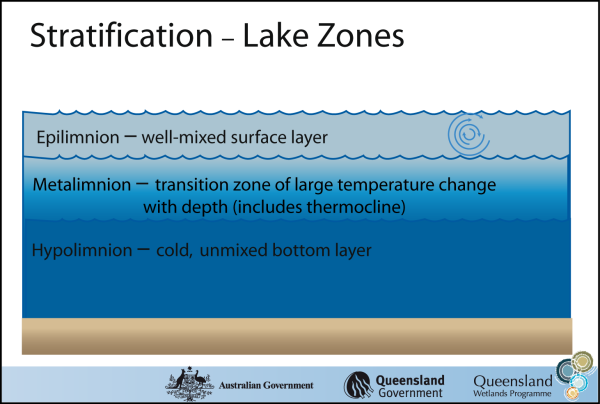 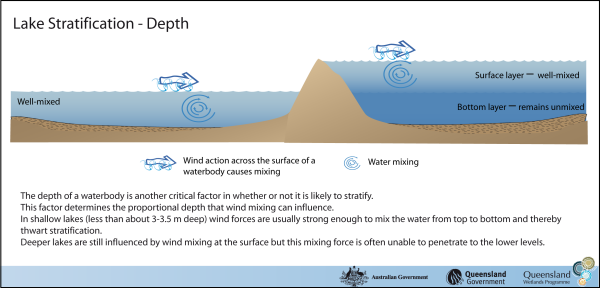 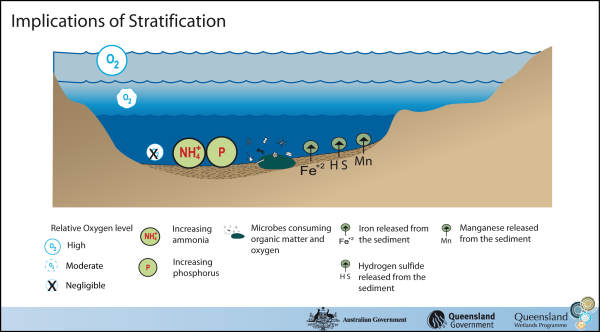 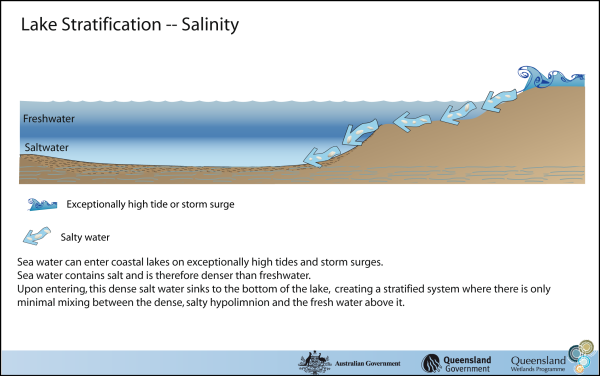 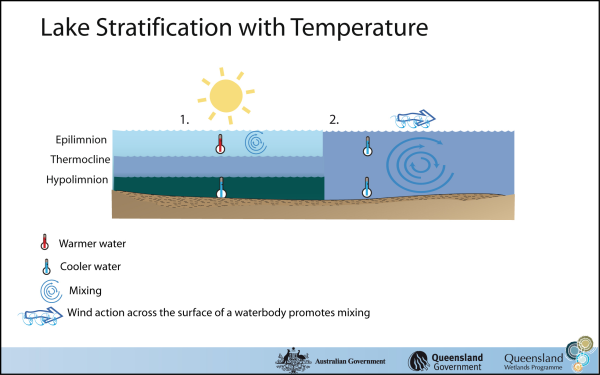 Stratification is driven by density differences within the one waterbody. Temperature has a significant effect on water density—warmer water is less dense and therefore will float on top of colder water (of the same salinity).
MixingStratified lakes allow very little mixing between the lake surface and the lake depths, virtually cutting off the oxygen supply to the unmixed bottom layer (the hypolimnion). When there is little oxygen input from submerged plants (due to low light levels, for example) or when a large amount of organic matter has stimulated the growth of oxygen-consuming bacteria, the water in the unmixed bottom layer (hypolimnion) can become extremely low in oxygen (anoxic) over time. Anoxia has a range of impacts. Not only does it make conditions harder for organisms that require oxygen for respiration to survive, it impacts on a range of chemical processes. Anoxia and nutrientsIn anoxic conditions, the nutrients phosphorus and nitrogen (in the form of ammonia) become more soluble (dissolvable) and are released from the bottom sediments into the water column. Ammonia cannot be converted to nitrate without oxygen and will therefore accumulate in anoxic water, especially under high pH (basic/alkaline) conditions. During the summer, stratified lakes can sometimes partially mix (such as with the passing of a cold front accompanied by strong winds and cold rains), allowing some of these nutrients to ‘escape’ up into the well-mixed surface waters and stimulate an algal bloom if light and temperature conditions permit. Ammonia can also directly affect animals, such as fish, that are sensitive to ammonia and are repelled by high levels in the water. Anoxia and other trace elementsSome metals and other elements—notably iron, manganese and sulfur (as hydrogen sulfide)—also become increasingly soluble under anoxic conditions and are released from the bottom sediments, especially under acidic conditions. These compounds cause taste and odour problems—a potentially serious concern in drinking water supply reservoirs. Additionally, high hydrogen sulfide concentrations can be lethal to many game fish as well as some zooplankton (microscopic animals that are an important fish food). Hyporheic flowWater flowing through a river can move through the sediments beneath and adjacent to the channel. This is termed the hyporheic zone, where surface water and groundwater mix. The water that flows through this zone is termed hyporheic flow, subsurface flow or base flow, and can be an important source of water for floodplain lakes and swamps. Due to filtering by alluvial sediments (e.g. sand) hyporheic flow tends to be less turbid (clearer) than surface water flow. Stratification zonesUnder certain conditions related to temperature, wind mixing, salinity, waterbody depth and vegetation cover, Queensland lakes can stratify into different layers. The upper layer of a waterbody is a warmer (and therefore lighter), well-mixed zone called the epilimnion. Below this is a transitional zone called the metalimnion, where temperatures rapidly change with depth. The thermocline is a horizontal plane within the metalimnion at the zone of greatest water temperature change. The metalimnion is very resistant to wind mixing. Beneath the metalimnion, and extending to the lake bottom, is the colder, heavier, darker and relatively undisturbed hypolimnion. More hydrology information is available in the chronology of a flooding lake. Last updated: 22 March 2013 This page should be cited as: Department of Environment, Science and Innovation, Queensland (2013) Coastal and subcoastal non-floodplain sand lake—Window – Hydrology, WetlandInfo website, accessed 8 May 2025. Available at: https://wetlandinfo.des.qld.gov.au/wetlands/ecology/aquatic-ecosystems-natural/lacustrine/non-floodplain-sand-lake/hydrology.html |

 — Department of the Environment, Tourism, Science and Innovation
— Department of the Environment, Tourism, Science and Innovation

